#whatisliberalarts
Text
Kenyan sculptor turns scrap metal into art with a message - art and culture
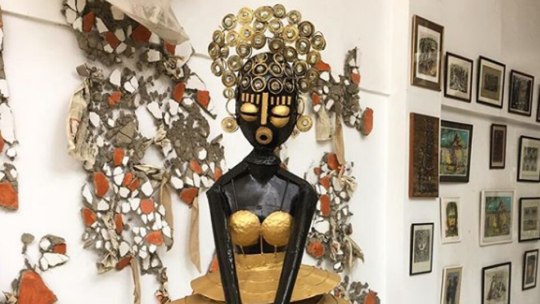
Two life-size lions crafted from scrap metal guard the entrance to the studio of Kenyan metal sculptor Kioko Mwitiki. Nearby a leopard, with holes in its metal body to mimic spots, crouches next to a giant elephant sculpture.Mwitiki, 56, estimates that he has sculpted thousands of tonnes of discarded metal -- from supermarket trolley wheels to shredded metal from factories -- into art over three decades.Customers for his artefacts, which can fetch up to $10,000 each, have included former U.S. president Bill Clinton, the Danish royal family, The Smithsonian museum in Washington and the San Diego Zoo.Mwitiki says his work is particularly relevant today due to global concerns about over-consumption, pollution and climate change.“Recycling has become a very important issue because you just need to be in sync with what is happening; all this plastic in the air, all this plastic in the ocean,” he told Reuters in his studio, where apprentices noisily beat and twisted metal.Sometimes his choice of material helps to draw attention to wildlife conservation, an issue close to his heart.For his lion sculptures, he transforms animal snares, used by illegal hunters in national parks and given to him by the Kenya Wildlife Service, into dramatic manes.Accidental ArtistMwitiki became an artist by accident.His elder sister sent him to be an apprentice in a welder’s shop as punishment after he was expelled from university in 1986 for joining anti-government protests on campus.In his spare time, he fashioned a few artistic objects from metal. He later found them displayed at a Nairobi gallery after a broker bought them cheaply from him and sold them on. This led him to realise he could support himself as an artist.Mwitiki’s childhood memories -- and concerns about growing conflict between humans and animals in his country -- inspired him to sculpt wildlife.He grew up south of Nairobi in the Rift Valley, where large herds of wildebeest once roamed the plains.“We literally had to go through a herd of wildebeest to get to school so these are things you can never forget.”Those migration routes have largely disappeared due to human encroachment on animal habitats.Mwitiki has trained younger artists, including two men from Malawi, who returned home to start similar recycling programmes.“We must teach the younger people to understand the importance of recycling because the resources that we have are in danger of being polluted,” he said. (This story has been published from a wire agency feed without modifications to the text.)Follow more stories on Facebook and Twitter
Read the full article
#acrylicpaint#Art#artgallery#artsupplies#artist#artwork#at#deviantart#famousartists#gallery#howgreatthouartchords#howgreatthouartlyrics#modernart#paint#sculpture#watercolor#watercolorpainting#whatisliberalarts
9 notes
·
View notes
Photo
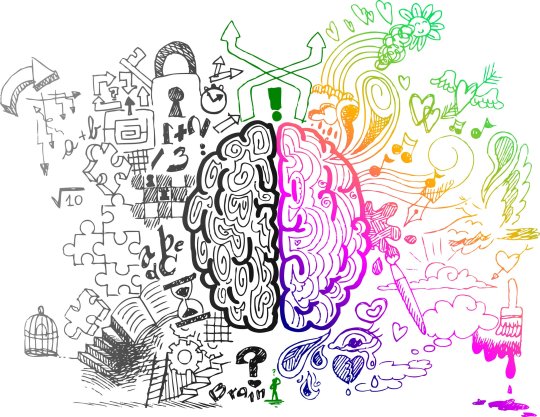
What Is Liberal Arts? What is liberal arts? It is a way of le... Read the rest on our site with the url below https://worldwidetweets.com/what-is-liberal-arts/?feed_id=60846&_unique_id=610c314d85906 #aboutLiberalArts #LiberalArts #LiberalArtsinfo #LiberalArtsnews #LiberalArtsupdate #WhatIsLiberalArts
0 notes
Photo
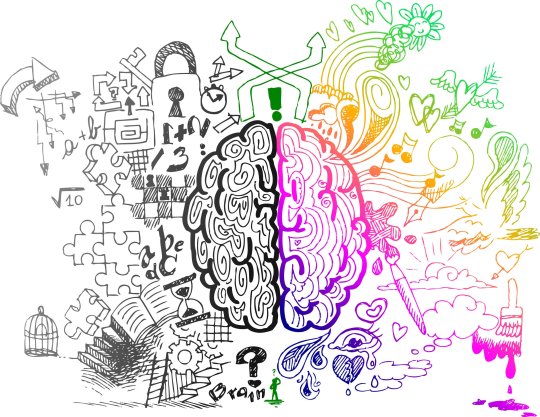
What Is Liberal Arts? What is liberal arts? It is a way of le... Read the rest on our site with the url below https://worldwidetweets.com/what-is-liberal-arts/?feed_id=60847&_unique_id=610c314e89889 #aboutLiberalArts #LiberalArts #LiberalArtsinfo #LiberalArtsnews #LiberalArtsupdate #WhatIsLiberalArts
0 notes
Photo

What Is Liberal Arts? What is liberal arts? It is a way of le......Read the rest by clicking the link below! https://worldwidetweets.com/what-is-liberal-arts/?feed_id=47822&_unique_id=6075fda66c32e
0 notes
Photo
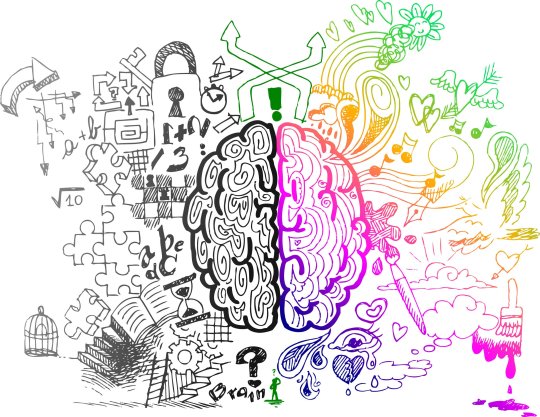
What Is Liberal Arts? What is liberal arts? It is a way of le......Read the rest by clicking the link below! https://worldwidetweets.com/what-is-liberal-arts/?feed_id=47823&_unique_id=6075fda83cd76
0 notes
Text
A new Rembrandt was just discovered. So what? - art and culture
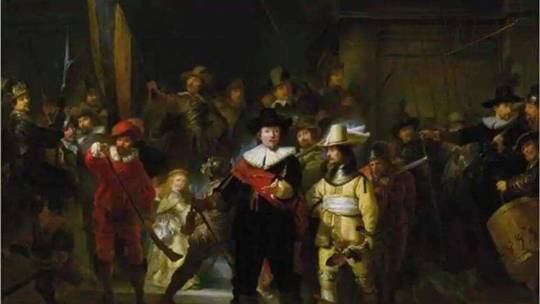
Earlier this February, Pennsylvania’s Allentown Art Museum posted an Instagram video announcing that a work in its collection attributed to Rembrandt’s studio was in fact by the master himself. Sent away for a cleaning, layers of varnish and overpaint (a fancy word for touch-ups) were removed by conservators and like a particularly high-stakes episode of Antiques Roadshow, the portrait of a rosy-cheeked woman in exquisite lace from 1632 had its attribution changed for the better. The painting, which was previously worth thousands, now potentially has a multimillion dollar valuation.A dramatic “rediscovery” along these lines is actually nothing new, dealers say. “It happens quite often,” says the British dealer Simon Dickinson. “Rembrandt is an artist who’s being reappraised all the time. I remember in my early days at Christie’s we sold a Rembrandt for a lot of money, and then it was not accepted by the Rembrandt committee. Then about three years later, it was re-accepted.”This instability in the market is something insiders take for granted. In the most extreme case in history, a painting was bought at auction for a few thousand dollars and then, after cleaning and restoration, determined to be a work by Leonardo da Vinci. It sold in 2017 at Christie’s New York for $450 million. For the broader public however, these questions of connoisseurship can come as something of a surprise. The art world has literally had centuries to hash it all out. And unlike contemporary art, where values are determined by fashion and hype, the old masters market is supposed to be static. After all, by definition, you can’t make them anymore.But with works’ attributions constantly in flux, how should the casual observer attempt to understand an artwork’s value? “It can be quite a subjective area, and that’s what makes people nervous about old masters as a field,” says Charles Beddington, whose Mayfair old masters gallery specializes in Canaletto. “Opinions can change. But it doesn’t happen that often.”Why attributions changeMany of the Italian and Dutch old master painters who are famous now—Rubens, van Dyck, Rembrandt, Canaletto and others— were just as famous when they were alive, and most had massive studios with dozens of painters churning out commissions. Some of these commissions would be painted by the artists themselves; others would be executed by their studios, after which the artist would add some finishing touches; still others would be done entirely by the studio. (The same thing happens today with marquee artists such as Jeff Koons, Takashi Murakami, Damien Hirst, and official Obama portrait artist Kehinde Wiley.)On top of that, these artists would often have imitators—can’t afford a Canaletto? No problem, there were plenty of other reasonably-priced Venetian cityscapes to choose from.As a result, there are artworks that are famously, indisputably by Rembrandt, and then there “are a number of borderline Rembrandts, which some people accept and others don’t,” Dickinson says. “But if it’s a great picture, it’s unlikely to have its attribution overturned.”And that leaves the not-necessarily-great paintings, of which there are many, dispersed across the globe.“There’s the old joke, Rembrandt painted 300 pictures, of which 600 are in America,” says the dealer Johnny van Haeften. “And certainly in the days before great scholarship, if it was a portrait of an old man in brown it was a Rembrandt, and if it was a landscape with a blue sky it was a Breughel.”Now though, he says “we can narrow it down to a much more precise authorship.”When attributions change“Discoveries are what make this field interesting” Beddington says. “I think there are many more discoveries than one ever hears about.”By discoveries, Beddington is referring to paintings that, for whatever reason, have been mis-attributed, and are thus valued at virtually nothing.“The best way to do it is find something in a smaller sale that’s completely mis-catalogued, and no one’s spotted it,” he says. “Maybe it can be bought for way less than it’s worth. But it works both ways, because often you find things that far more than they ought to, because you’ve got several people thinking they’ve made a fantastic discovery.”Last January, a drawing “recently recognized by a number of leading scholars as an autograph work by Raphael” sold at Sotheby’s New York for $795,000.In 2015, a New Jersey auction house estimated a painting at $500 to $800; it sold for $870,000 after two bidders correctly identified the work as a Rembrandt.Similarly, in 2007 a painting described as a 17th century copy of a Rembrandt was valued at about $3,000 at a regional auction house in England; it sold for about $4.5 million, after which it was also authenticated as the real thing. The Getty Center in Los Angeles later purchased the work for a reported $25 million. And then, of course, there’s that $450 million Leonardo, now cruising on a super yacht.Despite these high profile sensations, the market can still be fertile ground.“I bought something by a very big-name artist for nothing in a small sale the other day,” Beddington says. “I was absolutely astonished that no one else noticed.”What it means for youContinuous reappraisal in the old masters market is, from the right angle, only good news for an interested public.The Rembrandts in the Rijksmuseum are not going to be uncovered as fakes any time soon, but there’s an element of mystery and endless potential for the dozens of paintings and drawings that may or may not be the work of a genius.Moreover, this uncertainty can add an organic element to a field that laypeople often consider musty, even boring in comparison to the dynamism and drama of contemporary art.“When the really, really reliable expert on Frans Hals died at an advanced aged, suddenly a year or two later there were a lot of new Frans Hals paintings popping up,’ Beddington says. “The new Frans Hals expert has a totally different approach than the old Frans Hals expert” to authentication.Old masters paintings, in other words, can change with the times just like everything else.“Some things do reappear,” Van Haeften says. “That’s part of the excitement of dealing with old masters. You just have to think out of the box and keep an open mind.”©2020 Bloomberg L.P.(This story has been published from a wire agency feed without modifications to the text.)Follow more stories on Facebook and Twitter
Read the full article
#abstractart#acrylicpaint#Art#ArtandCulture#artgallery#artsupplies#at#deviantart#gallery#howgreatthouartchords#howgreatthouartlyrics#paint#popart#print#sculpture#watercolorpainting#whatisliberalarts
0 notes
Text
Artist Marcel Dzama’s on folklores, hybrid characters, and why his art exists in a world of the subconscious - art and culture
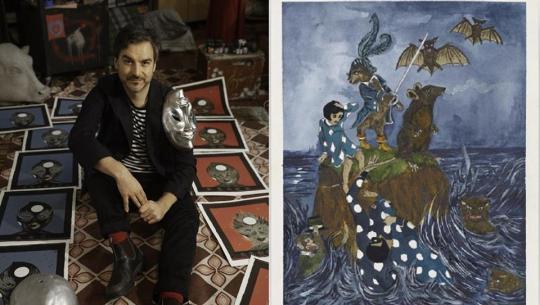
Canadian artist, Marcel Dzama’s work raises many questions. For the conscious and the subconscious, the real and the unreal. Where does personal, intimate art exist in the age of digital revolution? Are we still acquainted with the time-honoured fairytales and can we create our own with a pinch of the present realities? Is the representation of nature getting further divided or coming together in the world of art? At the India Art Fair’s12th edition held in Delhi recently, the Canadian-born artist who is known for his fantastical illustrations and hybrid characters that are inspired by day-to-day lives and real events showcased 15 works among which some were made particularly for the fair as part of the David Zwirner’s presentation, one of the leading international galleries in the world in the domain of contemporary art. An admirer of Indian culture and its many elements, Dzama chose themes like Bollywood dancers to regional wildlife for his visual storytelling. One of his works from 2019, ‘A dance can be taken as a manifesto’ depicts a woman dancing while three tigers watch and an eagle hovers above. It makes you think if that’s how nature intended it? A sense of universal celebration across species and definitely, an ode to the innocent territories of imagination. The turbulent oceanic wall titled Flowers of Romance, created by Dzama at the his booth at the Fair where many of these works were hung examined the constant and interrelated rhythm of nature and its beings. One cannot fail to notice Dzama’s tribute to American Artist Jason Polan who died in January early this year.

Marcel Dzama for David Zwirner at the India Art Fair 2020.
(
Mansi Midha
)
Dzama rose to prominence in the late 1990s with his representation of mystical narratives inspired by his childhood memories and fantasies, showcasing the delicate relationship between the real and the unreal, in an intricate and powerful way. He poignantly explores the elements of human action and stimulus mostly through erotic, grotesque, aggressive and absurd imagery creating an overlapping world of persistent human, animal and hybrid characters like humans with antlers or trees with hands, speckled with relative motifs. One can see strong influences of Surrealism, Dadaism and Agitprop in his work, bringing elements of reason, individualism, and half-truths and the many social and cultural battles that construct societies across communities. His strong sense of symbolism gives the viewer an open window to interpret the art in their own ways and revisit the deeply buried folktales and many forgotten stories of the past that must echo with our present and the future.
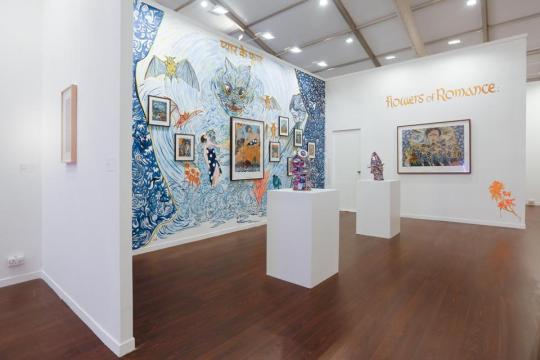
Marcel Dzama for David Zwirner at the India Art Fair 2020.
(
Mansi Midha
)
In an exclusive interview, artist Marcel Dzama who believes that storytelling and art are one and the same talks about his varied inspirations, the art of storytelling, the multilayered relationship between the real and the subconscious and why drawing continues to be his favourite medium. Excerpts from an exclusive interview:
Your new collection goes big on Indian culture that varies from the charm of Bollywood dancers to the many elements of regional wildlife. How did the inspiration come along? -With this new work for the India Art Fair, I referenced a few of the Bollywood films I have seen over the years. Most of the work for the show was influenced by early Indian films that I had seen while living in Winnipeg, Canada. There is a large Indian population there and there were many Indian video stores back in the 90s. I had a few lobby cards I had purchased long ago and a book of movie posters from some Bollywood films from the 1960s. I’ve always loved the choreography and costumes in those films. I read Indian myths, and watched Bollywood films and listened to their soundtracks - mainly those from the 1960s by artists like Mohammad Rafi and Kishore Kumar. I always have some animals appear and I wanted to use animals that would speak to the setting, with cobras and elephants included as part of these new works.
Your art narrative holds a special place for fantasies, fairy tales and folk vernacular references. How do you think it affects your work in contemporary space? How do you deal with the juxtaposition? -I like the juxtaposition of mixing high brow and low brow culture. I try not to discriminate between popular culture and intellectual pursuits.
Your work looks at the multi-layered and evolving relationship between the real and the subconscious via visual arts. How difficult it is to align the real and the subconscious and what are the related challenges to bring the two worlds together? Do you equate subconscious with ‘unreal’? -I feel that my work exists in a world of the subconscious but is sometimes infiltrated by the real. Whenever I find the news too disturbing or negative, I find that my work gets more political as an exorcism of the news of the day so I’m able to sleep at night. In the times we live in now, reality seems almost more of a farce and absurd than the subconscious.
Your narrative has time and again touched upon hybrid characters, often by means of the violent, erotic, grotesque, and absurd. What is your take on the term hybrid and how it impacts your idea of storytelling? -When I was in high school, there was a mentor programme where you would become a teacher’s assistant for the younger kids. I would get the kids in a group and ask two kids what their favourite animals were and draw the two together as a new creature. That might have inspired my first hybrid creature. But throughout mythology, there are many hybrid creatures that I’m fascinated by. You have worked across many mediums, be it puppetry, costumes, illustrations, water colour, sculpture, video among many others. What particular domain remains a favourite and why? -My favourite medium has always been drawing, it is the beginning of all my other projects. Not only is it its own art form, but it also leads to creating the costumes, films and everything else. Do you read as much as you draw? What are you reading currently? -I definitely draw a lot more than I read. I find myself reading in situations where its impossible to draw, like the airport or the subway. I spend at least two hours on the subway in New York each day, so I have been getting a lot of reading done. At the moment I’m reading a biography on William Blake. What’s next? -I’ve been experimenting with making large pectoral mosaics & a secret project is coming soon from that. I’ll be doing a New York show with David Zwirner which will feature some collaborations with Raymond Pettibon and Amy Sedaris, as well as a musical collaboration with Will Butler from the band Arcade Fire. Will and I might try to make it soundtrack vinyl record for A Flower of Evil, so I guess I’ll be doing an album cover for that. But no others that I know of yet. Follow more stories on Facebook and Twitter
Read the full article
#abstract#abstractart#Art#artgallery#deviantart#famousartists#howgreatthouart#howgreatthouartlyrics#metropolitanmuseumofart#modernart#paint#popart#print#wallart#wallpainting#watercolorpainting#whatisliberalarts
0 notes
Text
‘It is the best time to be a performer,’ says Sonali Kulkarni - art and culture

Making her on-screen debut in 1992, actor Sonali Kulkarni was first seen in a Kannada film titled Cheluvi, which was directed by Girish Karnad. Since then, she has appeared in many films including Dil Chahta Hai (2001), Taxi No. 9 211: Nau Do Gyarah (2006), as well as several plays.We caught up with Sonali, who is currently performing in Mirror Crack’d, the Indian adaptation of Agatha Christie’s iconic story. The play is a murder mystery that takes place in a famous but fading actor’s villa in Goa.Excepts from an interview.What can you tell us about your character in Mirror Crack’d?In the original story, the character is called Marina Gregg, and I play her. She is a famous film star. The storyline of the play follows a murder mystery, and my character is also involved in it.You’ve been acting in theatre for quite some time now. How does it feel to be a part of such a big production?I started with theatre and then I got into films. But so far, for me, both films and plays, have been going hand in hand. I’d never planned to do theatre or films, it just happened. I have always been instinctive about my choices. And this is the first time I am getting to work with such a fantastic crew. The last two months have been gruelling for us. They weren’t really rehearsals, instead it’s been a fantastic workshop, and I am so happy that I am working with a crew like this. There are many actors with whom I had never worked with before. Shernaz and I have been associated with each other, but this is the first time we will be sharing the stage.What do you enjoy more — acting in theatre or films?I think I breathe films and I eat plays, so they’re both very necessary (laughs). I can’t do without either. As I said, I haven’t been as meticulous and I haven’t ever planned my career. My shows keep happening. But there was a period when I was doing a play and I wasn’t shooting for any films at the time, and I am courageous enough to take those risks as well.
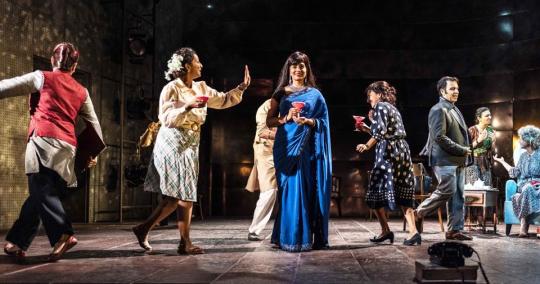
A still from the play Mirror Crack’dBut you do enjoy theatre a lot, don’t you?It would be wise to say that theatre is my life. I am very happy with the way I’ve kept working in films because of which I got a worldwide audience. I have done commercial, art house, regional and international cinema, too. This matters because it only multiplies my theatre audience. Both theatre and films matter a lot to me.Many actors move out of theatre because it’s not a well paying profession. What are your thoughts on this?I don’t feel it’s right or wrong to be working in both films and on stage. One has to support their family, and so money is an important factor. It’s not wrong to be working in different mediums at the same time. You are pursuing your needs while also pursuing your passion. There are multiple shows now, and sponsors who are coming in. So, let’s see.So, is theatre evolving?Certainly. India is one of the few countries where we have original playwrights. There are original scripts. We have writers who write in many different languages. Groupism that existed in theatre is going away, and people are trying to collaborate. There have been fantastic directors and actors who have brought people together, and efforts are being made. It’s the best time to be a performer.
Read the full article
#abstract#acrylicpaint#artwork#at#howgreatthouartlyrics#metropolitanmuseumofart#modernart#wallpainting#watercolor#whatisliberalarts
0 notes
Text
Charles Darwin 211 birth anniversary: Interesting facts about man behind the Theory of Evolution - art and culture

The man who is best known for his contributions to the science of evolution, Charles Robert Darwin was born on February 12, 1809. He published his theory of evolution in the 1859 book On the Origin of Species and proposed that all species of life have descended over time from common ancestors -- a fact that is widely accepted by the scientific community now. One of the most influential figures in human history, Darwin’s explanation of the diversity of life was in sharp contrast to Victorian beliefs of the time. However, the book aroused international interest and saw less controversy that his less scientific work Vestiges of the Natural History of Creation. Darwinism went on to become a movement covering a wide range of evolutionary ideas. His work on the theory of evolution also broke through Godwinian utopianism, a theory propounded by philosopher-novelist William Godwin. Godwinian utopianism considered co-habitation to be an evil and termed marriage as a “system of fraud.” In 1882, Darwin was diagnosed with heart disease and died at Down House, United Kingdom, in April. At the time of his death, the scientific community was convinced that evolution as descent with modification was correct, making him a revolutionary scientist. On Darwin’s 211th birth anniversary here’s looking at a few interesting facts about him Darwin got enrolled in the prestigious University of Edinburgh to study medicine, but soon realised that the subject was not meant for him, mainly due to his aversion to blood. He ended up graduating from Christ’s College in Cambridge with a degree in arts. He embarked on a five-year voyage on the HMS Beagle, which helped establish him as an eminent geologist. His observations supported Charles Lyell’s conception of gradual geological change. The publication of his journal chronicling the voyage made him famous as a popular author as well. The chronicling of Darwin’s voyage, which ended in 1836, resulted in his theory of evolution and natural selection. However, he did not present his theory of evolution until 1858 when he announced the same with British naturalist Alfred Russel Wallace, who had proposed a similar theory as. Darwin published his seminal work, ‘The Origin of Species by Means of Natural Selection’, the year after. Charles Darwin shares his birthday with Abraham Lincoln. Born on the same day and year, the two had another similarity. While Lincoln is known for abolishing slavery from America, Darwin was passionately opposed to slavery as well. Darwin’s interaction with Yaghans (Fuegians) during the second voyage of HMS Beagle had a profound impact on his view of primitive peoples and added to his views against slavery. Darwin not only proposed the theory of the origin of species but liked dining on quite a few exotic ones as well. During his time as a student at Cambridge, he formed the Glutton Club, with the sole aim of dining on exotic birds and beasts which were unknown to the human palate. He was known to have dined on hawk, armadillo, ostrich and even a puma. Follow more stories on Facebook and Twitter
Read the full article
#abstractart#Art#ArtandCulture#artgallery#artsupplies#artwork#at#Culture#deviantart#finearts#howgreatthouartlyrics#howtodonailart#metropolitanmuseumofart#oilpainting#popart#print#wallpainting#watercolorpainting#whatisliberalarts
0 notes
Text
Valentine’s Day 2020: Myths and legends surrounding the day of love - art and culture
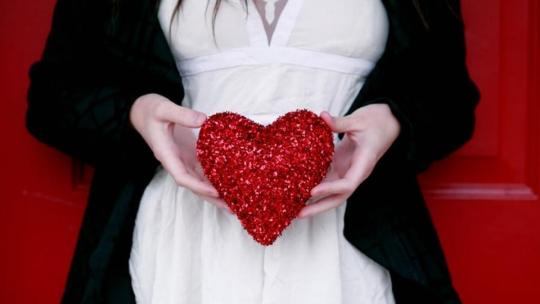
Some might say love is a myth, while others may think like Joan Baez that love is just a four letter word. But there is no denying the fact that Valentine’s Day, dedicated to the feelings of the heart, is perhaps one of the most widely celebrated occasions around the world. A day which sees red roses, chocolates, and stuffed toys bearing (often) melodramatic messages brightening up young souls as the winter gloom gives way to spring. It is not bereft of myths and legends surrounding it. February 14The Victorians may have popularised it, but the concept of Valentine’s Day is far older and traces its origins back to ancient Rome. The Romans celebrated a drunken festival called Lupercalia in mid-February, which involved hitting women with the hide of a sacrificial goat -- all in the hopes of raising their fertility. Not too romantic is it?The creator of the Canterbury Tales, Geoffrey Chaucer spoke about the day in his 14th-century poem Parlement of Foules, which is considered to be one of the earliest references to Valentine’s Day.CupidThe rosy-cheeked Roman god of love is perhaps one of the most popular Valentine’s Day iconography. But the figure of Cupid is far from cherubic in classical mythology. In Roman myths, Cupid is defined by his seductive prowess and in later adaptations, he is shown as a malicious figure who exploits desire to draw people into the world of vice.In Greek myths, Eros is the god love. He is one of the primordial gods who came into existence asexually; and wielded power over god and mortal alike.B0849MY5MTGreeting cardsYes, the Victorians popularised it by exchanging tokens of love and the tradition really took off with the improvement of postal services. The concept of a day dedicated to love was not started by them.In 1797, a British publisher issued a book that contained sentimental verses for the young lover unable to compose his own. Paper Valentines became so popular in England in the early 19th century that they were assembled in factories as well.B07N2F79N3Saint ValentineIt is only normal that people associate St Valentine with Valentine’s Day, but did you know that the Catholic Church recognises at least three different saints with the same name, all of whom were martyred.One of these legends surrounds Roman Emperor Claudius II. The ruler from third-century decided that single men made better soldiers than those with families and outlawed marriages. Valentine, who was a priest with the emperor, realised the injustice of the decree and defied the emperor to conduct secret marriages.When Valentine’s actions were discovered, Claudius ordered him to be killed. Others believe that the person was Saint Valentine of Terni, a bishop who too was beheaded by Claudius II.Single means miserableCompanionship has often been linked to long-lasting happiness. But is it true?In the book Happy Singlehood: The Rising Acceptance and Celebration of Solo Living by Hebrew University researcher Elyakim Kislev, he says that singles are not a minority and are far better positioned to realise happiness and fulfillment in their lives.Follow more stories on Facebook and TwitterAt Hindustan Times, we help you stay up-to-date with latest trends and products. Hindustan Times has affiliate partnership, so we may get a part of the revenue when you make a purchase.
Read the full article
#abstract#abstractart#ArtandCulture#artsupplies#artwork#Culture#deviantart#famousartists#gallery#howgreatthouart#metropolitanmuseumofart#modernart#moma#paint#print#sculpture#wallart#wallpainting#watercolor#whatisliberalarts
0 notes
Text
Ankur Tewari on music festivals in India, spoken word poetry, Gully Boy and more in this exclusive interview - art and culture

The city of lakes and a popular tourist and wedding destination, Udaipur, Rajasthan is alive with culture and the sound of music of various genres. Lake Pichola, City Palace, Fateh Sagar Lake, Jagmandir Palace are some of the must-visit locations while you’re in this city.The Vedanta Udaipur World Music Festival (UWMF) has begun today and will be on until Sunday, February 9 2020. A city-wide, multi-venue music festival featuring 150 global artists and collaborations, the fest also sees participation from countries namely Spain, Italy, France, Brazil, Switzerland, and many more.In its 5th edition this year, this festival has fast become the biggest world music festival in the country. This year’s edition is built around the concept We are the World: Unity in Diversity. Spread over three picturesque venues, UWMF offers immense diversity in music that celebrates different moods of the day, right from a morning meditative raga to personifying romantic music at its best played beside the lakes in the afternoons. Evenings will bring spirited youthful music that connects people of all age groups. The festival also features local Rajasthani talent.Ahead of their performance tomorrow at UWMF 2020, we got a chance to speak with Ankur Tewari and The Ghalat Family. Excerpts from an exclusive interview:Q. Tell us about the inspiration behind called The Ghalat Family and why?A. The inspiration behind the band being called The Ghalat Family is actually nothing serious, we didn’t have a name for a band. We were shooting for a music video and a friend of ours saw us and he said that we are a bunch of misfits and somehow the word The Ghalat Family came out between fits of giggles and laughter and we just stuck by the name.Q. Your opened for singer Norah Jones back in 2013. What’s been your fondest memory of that day?A. It was quite a special opening for Norah Jones back in 2013. It was a summer-time festival where we were going to play and I have always been a fan of her music and I have never seen her live so just to share the backstage along with her is a big honour. Karsh who was also opening for alongside us is a friend of hers (Norah’s) and because of him we met her, chatted with her. It was quite a humbling experience to see somebody so famous and big, being so humble, and her band was also too nice and too sweet.Q. How far have famous authors from history impacted your songwriting? Tell us some of your favourite proverbs/lines written by Manto and Bukowski.A. An intellectual says a simple thing in a hard way and an artist says a hard thing in a simple way this quote by Charles Bukowski has always struck a chord with me. There are so many interesting authors and poets whose words resonate with me, Manto’s Toba Tek Singh is a classic for me where people in an art house are asked to decide whether they want to go to Pakistan or stay in India during partition… can’t describe the partition in a better way.Q. What’s more fun: performing for a live audience or in a studio?A. I have always been a performing artiste. I love performing to a live audience. I have not been in the studio as much as I want to be in the studio. I find performing live is a better community experience but in recent times, I started enjoying recording in the studio as well. But definitely, when I perform I like to play more for an intermediate audience than big stages. Big stages make me feel very distant from the audience and with my band members at the same time.Q. Favourite film song project you have been a part of?A. Favourite film song project that I have been a part of is my first song Sabse Peechhe Hum Khade for Let’s Enjoy (2004). That was the song I used to sing and then I used it in the movie and then I got Silk Route to sing a cover of it.Q. What can the audience expect at the Vedanta Udaipur World Music Festival 2020? Tell us something about the songs you have chosen in your set and what’s in it for everyone attending?A. Vedanta Udaipur World Music Festival is very special for me especially it is organised by SEHER. It is like a family for me and I have curated an interesting set of my popular songs including Mohabbat Zindabad, Sabse Peechhe Hum Khade, Dil Beparvah and some surprises.Q. Your thoughts on the music festival scene in India and if there’s one thing you could change, what would it be?A. It is amazing that there are music festivals that showcase artistes from around the country and the globe. When I started making music, there was none, but it’s so amazing to see so many festivals cropping up, so many stages, and I am encouraged to see this kind of an atmosphere in the world with independent music.If there’s one thing I could change, I would try to include more new artistes in the line-up every time because, for me, music festivals are about the discovery of new music as well. Vedanta Udaipur World Music Festival is one such festival which brings new artistes from across the globe in its editions and I simply admire this concept.Q. Tell us more about Woh Hum Nahin and the process of writing/composing it.A. Woh Hum Nahin came to me in about 5 minutes. I was backstage going to perform in 10 minutes and I was looking at my phone and I saw the images of violence in the hostel of JNU and it really hurt me that such kind of violence is happening in universities, in colleges in India and it had a deep impact on me. Thought about of nation that has Mahatma Gandhi as a father of the nation, a pioneer in the world of peace and agent of love in this country. Such an act happening, it broke me within. Even before I could hit the stage in 5 minutes these words came to me and I went and performed my set. I came back and found the chords to these words, and recorded it in an hour’s time.Q. How did you decide on collaborating on Kommune with Roshan Abbas?A. If I may be honest it was Roshan Abbas who decided to contact me and Gaurav Kapoor and take our discussions further. We were usually discussing how we don’t find going out exciting where the only place you go out is to tune out of the world. But sometimes you go out to tune in to something and feel enriched when you come out of it and we were missing those events. So Roshan Abbas came up with an idea that we should gather those people who will be interested in storytelling, poetry or music of a softer sort. We pretty much started on instinct and before we knew it, it is known into a big thing.Q. What can you tell us about the upcoming seasons of The Spoken Fest? After the Delhi debut late last year, will Spoken be going to other cities too?A. We are constantly in touch with the spoken word artists and poets around the world and we are trying to make it interesting with each coming year.The Delhi edition was encouraging and on the response of the Delhi edition, we thought to take it to other cities as well. Many cities have written to us and we are strongly crunching the numbers to make sure that we can take it to other cities as well.Q. For upcoming poets, what is the one-word advice you would want to share?A. My only advice to upcoming poets is that you should be honest and clear with what you want to express and try not to push vocabulary outside what you use. If you are not satisfied with your vocabulary, read more books and increase your vocabulary, once you start using those words in your life you should include mini pauses as well.Q. Name three poets you’ve seen Live in performance and find great promise in their voice?A. Some of the poets I admire are Kausar Munir, Swanand Kirkire and Varun Grover. They’ve also had an amazing impact on me.Q. You’ve worked with Prateek Kuhad on several songs too - tell us about this collab. A. I’ve worked with Prateek on the collaboration called Dil Beparvah, for a show called The Dewarists and it happened organically. It was amazing that we both are diverse personalities and the song became the meeting point for both of us and started an interesting friendship where I get to learn a lot from this young artist.Q. Your favourite from the Gully Boy album and why?A. My favourite work from Gully Boy is definitely Apna Time Aayega for the way the song happened, the way poetry happened and the collaboration happened with Divine who is such an amazing artist. I’ve never imagined that I would be collaborating with a hip-hop artist. It was a dream collaboration to work with Dub Sharma, Divine with Javed Akhtar Sahab giving his suggestions and inputs.Q. Jeene Mein Aaye Mazaa is a sweet reminder of life in Bombay (Mumbai) one has lived and misses. What was your inspiration behind the number?A. Jeene Mein Aaye Mazaa is for me a story about friends, a story about people who stands by you even when the times are tough. When the tough times are over you look back and you realise how important they are because you know tough times don’t last but friends do. They make this world worthwhile and if we can ever look beyond the balance sheets of life then you will realise friends are what makes your world. Follow more stories on Facebook and Twitter
Read the full article
#ArtandCulture#artgallery#artist#at#Culture#famousartists#finearts#gallery#howgreatthouartlyrics#howtodonailart#moma#oilpainting#paint#paintonline#print#watercolor#whatisliberalarts
0 notes
Text
Music festivals to look forward to in 2020 - art and culture

If you’re a festival junkie and music is your raison d’être we have tailor-made a calendar to suit your lifestyle.Booking.com has curated a list of some of the best music festivals across the country including some all-time hits, first-time festivals and out-of-the-way experiences for you to enjoy in 2020. So whatever your genre - EDM, rock, hip hop, sufi, folk or trance, there’s something for everyone.Sula FestSet against the backdrop of green mountains the two-day Sula Fest will witness performances by popular indie artists like Local Train, When Chai Met Toast among many. Other than a diverse lineup, the festival has curated several experiences like grape stomping, master classes by winemakers and much more! The event not only focuses on wine but also offers a good variety of food with great music performances. Where: NashikWhen: February 1-2, 2020,Vh1 SupersonicPune hosts the country’s biggest multi-genre experiential festival ‘Vh1 Supersonic’. With a promising line up and multiple international acts, the festival will give you an opportunity to groove into the EDM beats as you enjoy the scenic beauty of the city. So, book your tickets immediately for a perfect weekend getaway.Where: PuneWhen: February 7-9, 2020Mahindra BluesMumbai’s iconic Mehboob Studios becomes centre stage for the world’s finest blues musicians as guitars are strummed and souls are elevated with music. Held on a breezy weekend in February, Asia’s largest blues festival is the place to be at for lovers of the genre.Where: MumbaiWhen: February 8-9, 2020Udaipur World Music FestivalThe second edition of this festival is all set to electrify Udaipur from Feb 9-11 and create new landmarks in the field of music. This exciting event will witness the participation of 150 artists from over 17 countries all performing at one platform. Several of them are prominent names and first timers who will enthrall the audience with their amazing music.Where: UdaipurWhen: February 7-9, 2020RagasthanThis vibrant festival transforms the deserts of Rajasthan into a magical multi-hued camping site with music, art, cinema, culture taking centre stage against the backdrop of sand dunes of Jaisalmer. The festival promotes eco-friendly tourism and encourages the preservation of Rajasthani culture. The festival promises to serve everything you are looking for captivating performances, aural and visual excellence and an ambience you never want to leave.Where: JaisalmerWhen - February 23-2,5 2020Shiva Squad FestivalWith an aim to develop social harmony and artistic expression, this one-of-a-kind music fest takes place in Manali in the month of September. This event brings together the finest artists of trance, electronic, rock, jazz, fusion, classical, R&B and folk music.Where: ManaliWhen - September 25- 27, 2020Ziro Festival of MusicThe green valleys of Arunachal Pradesh come to life every September with the Ziro Music Festival. The festival started in 2012 by Bobby Hano and Menwhopause guitarist Anup Kutty. The festival is hosted by the members of the Apatani tribe in Ziro. The four-day festival features some of the best indie acts from around the world and leading folk musicians from Northeast India to give you a soul-stirring experience.Where: Arunachal PradeshWhen: September 27-30Jodhpur RIFFLove fusion music? This 5-day long music festival in Jodhpur is dedicated solely to folk musicians and artists from all over the world. Set against the magnificent Mehrangarh Fort, this festival provides an open stage for acclaimed folk artists from India and abroad with the sole aim of familiarizing the world with traditional Rajasthani musical heritage.Where: JodhpurWhen: October 29-November 2, 2020 NH7 WeekenderPopularly known as India’s happiest music festival, NH7 Weekender is held in Shillong, Meghalaya and Pune, Maharashtra every year. The festival boasts of a unique artist line up, lip-smacking local food, art installations and breezy pleasant weather. The dates of the festival for this year haven’t been announced yet but watch out for the tickets as NH7 is known to bring renowned artists to India.Where: Pune and MeghalayaWhen: November/ December 2020Echoes of EarthIndia’s greenest music festival, Echoes of Earth includes international and Indian musicians who perform to celebrate one Earth. The Bengaluru-based festival celebrates a love of music while upholding a deep commitment to sustainable practices and the age-old adage. In the 4th edition now, this year the festival celebrates endangered species of flora and fauna, with its theme ‘The Sanctuary’.Were: BengaluruWhen: December 7-8, 2020 Magnetic Fields FestivalEvery year in December, music lovers from around the world travel to the pink city of Jaipur for the Magnetic Fields Festival. Set against the stunning background of Alsisar Mahal, this 3-day fest has multiple stage performances across genres including EDM, folk, house and trance. This festival is a must if you’d like to explore the underground music scene accompanied by stunning visuals, local cuisine and royal hospitality.Where: JaipurWhen: December 11-13, 2020Hornbill FestivalAlso called ‘Festival of the Festivals’ Hornbill Festival is held in Nagaland every December. The festival encourages inter-tribal interaction and promotes the cultural heritage of Nagaland. This 10-day music festival is filled with authentic food, folk dance, fashion shows, night bazaars and music concerts. So, keep an eye out to tick this music festival and a trip to the Northeast off your list.Where: NagalandWhen: December 2020Sunburn FestivalKeep with the spirit of euphonic December and mark your calendar for Sunburn, one of India’s biggest EDM-centric music fests. Let loose in the sands of Vagator beach, Goa among the company of people from across 52 other countries. While this year’s line-up is yet to be announced, performers from last year include Martin Garrix, Flume, DJ Snake, The Chainsmokers - among others.Where: GoaWhen: December 2020(This story has been published from a wire agency feed without modifications to the text.)Follow more stories on Facebook and Twitter
Read the full article
#abstractart#acrylicpaint#Art#artist#at#deviantart#gallery#howgreatthouartchords#howgreatthouartlyrics#metropolitanmuseumofart#moma#oilpainting#paint#print#sculpture#wallart#watercolor#watercolorpainting#whatisliberalarts
0 notes
Text
Raja Ravi Varma, the crown jewel of India Art Fair 2020 - art and culture

In a dark room at the ongoing India Art Fair in the national capital, one of India’s biggest art events, shines through an illuminated figurative painting by Raja Ravi Varma, the indisputable father of modern Indian art. What is interesting is that it is the only Raja Ravi Varma painting in the entire Fair, and the gallery presenting it has nothing else on display.Amit Vadehra from the presenting Crayon Art Gallery said that they chose just one work to give the painting the importance it deserves. “We used special lighting in a dark space with a bench inspired from the 1700s,” he told IANS.Raja Ravi Varma (1848-1906) is India’s most celebrated classical painter of the modern era, best known for his fusion between European academic style with mythological themes from Puranas and other Hindu texts. His exhibited painting ‘Vishnu on Sheshnag’ is an iconic and seminal representation of Raja Ravi Varma’s work, depicting the classical iconography of the deity represented here with his wives, Goddess Lakshmi and Goddess Bhumi on either side, on the seat of the Sheshnag, the snake king. Also known as Shesha, the snake king is depicted in delicate fashion, in Varma’s renowned painterly style.Also on view is the painting’s oleograph on paper, a more affordable version of the coveted painting.(This story has been published from a wire agency feed without modifications to the text. Only the headline has been changed.)Follow more stories on Facebook and Twitter
Read the full article
#abstractart#Art#ArtandCulture#artgallery#artsupplies#artist#artwork#at#deviantart#howgreatthouart#howtodonailart#moma#paintonline#sculpture#watercolor#whatisliberalarts
0 notes
Text
British ballet shines spotlight on refugee women - art and culture
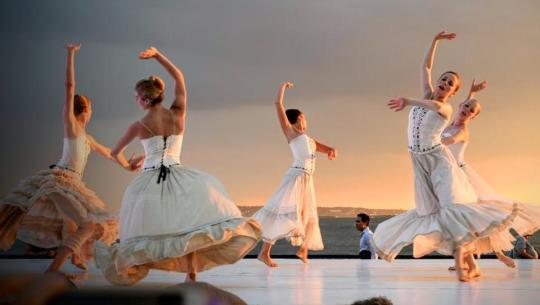
To flashing lights and a techno beat, an ocean throws up two bedraggled sisters whose ornate costumes betray traces of a better life - the opening of a new ballet at London’s Royal Opera House.The dance show follows the fate of two sisters - Aisha and Abhaya, whose names mean hope and fearlessness - as they flee a fictional troubled homeland, evading danger to navigate camps and city streets.Director Kibwe Tavares hopes his ballet, inspired by the 2015-16 migrant crisis that saw more than a million people reach Europe fleeing war in the Middle East and Asia, will challenge audiences.“The ambition was to try and get people thinking,” Tavares told the Thomson Reuters Foundation ahead of the world premiere on Thursday evening in London’s Covent Garden district.“In a world that feels like the status quo is now to be separated, this is about coming together.”Drawing on the Little Match Girl a fairytale by Danish author Hans Christian Andersen in which an impoverished girl dies selling matches, Tavares said he wanted to achieve more than entertainment through his modern multimedia tale.The refugee sisters watch as their mother is violently killed, meet other refugees - both sinister and supportive - sleep rough and hold onto their ideas of home.The world is witnessing the highest levels of displacement on record according to the United Nations, with about 71 million people globally forced from their homes due to conflict and persecution.About 4,600 people have arrived in Europe by land and sea since the start of 2020, according to the United Nations’ refugee agency (UNHCR). Young men still make up the majority, but women on the move face specific dangers from exploitation and gender-based violence to psychosocial trauma and health complications, particularly when pregnant.“Art and advocacy combined is a powerful tool that can help elevate the voices of marginalized populations,” said Sarah Costa, executive director of the Women’s Refugee Commission, which advocates for the rights of displaced women.“Whether through film, music, dance, opera or other mediums, art provides a platform upon which the rich stories of refugee women and girls can be told to new audiences around the world – and that can be transformative.”Disputes over immigration have divided the European Union, with governments split over who should take responsibility for migrants crossing the Mediterranean.The issue threatened to bring down German Chancellor Angela Merkel at the height of the migrant crisis in 2015, when hundreds of thousands came each month.The dance show will travel to Berlin in March and then globally in 2021, said director Tavares.“Ultimately, the real work is for people to go and think about things beyond their own stories,” he said.“Everyone’s got a story of how they arrived, in a way... everyone has a struggle.”(This story has been published from a wire agency feed without modifications to the text.)Follow more stories on Facebook and Twitter
Read the full article
#abstractart#acrylicpaint#artsupplies#famousartists#finearts#howgreatthouartchords#howtodonailart#metropolitanmuseumofart#modernart#oilpainting#paint#print#wallart#wallpainting#watercolor#whatisliberalarts
0 notes
Text
One for the community - art and culture

The Parsi community may be small and dwindling in number but that hasn’t proved to be a deterrent while they try to make a mark in the performing arts. From theatre to music and dance, they have been making their presence felt in the cultural landscape of Mumbai for a long time now.Keeping this in mind, a group of people from the community have come together to look for talents within their fraternity. Titled Bawas Got Talent, the show will give Parsis an opportunity to showcase their talents. The last time the group got together for something similar was four years ago, during Drame Bawas, which was an attempt to bring out fresh talent in the field of acting. “The result of Drame Bawas was, a lot of new people came in. For instance, normally, on a Parsi New Year day, there are three or four plays, but last year, there were around seven plays. So, the talent show helped, new groups came up because of it. But that was only for theatre, now we are extending it to group dance, singing, standup, etc. The idea is to unearth new Parsi talent, who, at the moment, perhaps, do not have the platform to perform,” says Burjor Patel, who was a pioneer and visionary of the Parsi-Gujarati and English stage.Actor and producer Shernaz Patel, who is part of the organising committee, says it’s not like competitions like this don’t happen but they happen in “smaller pockets”. “So, organising something like this at the National Centre for Performing Arts (NCPA) raises the bar for everybody. If you’re talented, your opportunities may be furthered by something like this — by us celebrating your talent, by nurturing it — because between the elimination round and the final round, we are also hoping to provide some mentorship. We are hoping that the finals will be an entertaining evening but it’s also going to be hardcore. It’s not just fun and games, you come up on stage and really show off your talents,” she shares.Due to migration and intermarriages, there are very few Parsis left in India. A 2016 statistics showed that their numbers are down to 61,000, and dwindling by the day. “Maybe that’s why it’s easier for us to organise events like this. When the community is large with lakhs of people, getting the message out is difficult. Because we’re small in number, it is much easier. A lot of people will know every third Parsi. We are also proud of our talents, so we want to showcase it,” says Hoshang Gotla, another member of the organising committee.Call for entries for Bawas Got Talent is on till February 1. The elimination rounds will take place in mid-February and the final is scheduled for April. The finalists will be mentored by professionals from the industry. “We want to bring in popular and talented people as judges. We are hoping that the participants will get an opportunity to learn from them,” says Shernaz, adding “I also feel that even though we are such a small community, we are very artistically inclined. We love entertainment and we don’t mind giving it a shot.”
Read the full article
#abstract#abstractart#ArtandCulture#artgallery#artwork#at#deviantart#howgreatthouartchords#howgreatthouartlyrics#howtodonailart#oilpainting#sculpture#wallart#watercolorpainting#whatisliberalarts
0 notes
Text
A rainbow on the silver screen - art and culture
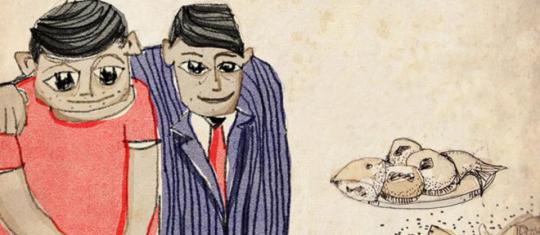
A coming out story of a gay man portrayed in the freeness of an animated film, the stark reality of the life of a transman shown as a documentary, a feature film of a budding lesbian romance in the villages of Maharashtra, and another about the fate of a transwoman accepting her reality. Such was the line-up of the two-day (January 21 and 22) theatrical release of these short films across eight cities — Mumbai, New Delhi, Kolkata, Bangalore, Hyderabad, Pune, Nagpur and Chandigarh, where they were showcased on the big screen. These films were among those showcased at Kashish, an LGBTQ+ film festival that was held in June last year, and went on to win many accolades before making it to the big screen across the country. “For the past decade, Kashish has been screening 160 to 170 films from 40 countries. In the last few years, India has been topping the list with around 30 films. None of these have ever seen a theatrical release or gone on to OTT platforms either (for the world to see). This package of award-winning short films (Monsoon Date, The Fish Curry, Ladli and U for Usha) will help mainstream audiences understand the diverse lives and experiences of the LGBTQ+ community. We want audiences to take back a slice of LGBTQ+ lives feeling that we are as ‘normal’ as everyone else,” says Sridhar Rangayan, founder and festival director. He is one among many who hope LGBTQ+ films get silver screen releases. He adds, “We hope to make this a continuous exercise where we are able to enable LGBTQ+ cinema across the country.” Though obtaining censor board certificates, which is a requirement for every film, is the “main blockage” right now for short films.
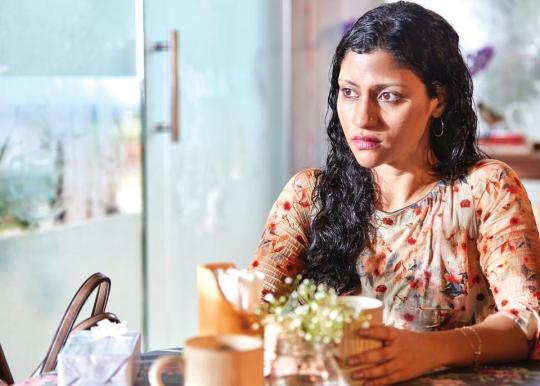
A still from the movie Monsoon DateTo quote Konkona Sensharma, who was the lead protagonist of Monsoon Date, “When we exclude LGBTQ+ from society, from our films, we tell an incomplete story of the world.” And her sentiments resound with director Tanuja Chandra, who showcased a film at Kashish for the first time this year. “I wasn’t able to catch these films at the fest, but they are beautiful, sad and heartbreaking at the same time. And they would be because they’re about an oppressed community.” She adds, “I want to make more short films, tell more stories that one doesn’t have the scope to do in commercial cinema.” Speaking about the plight of short films not getting a commercial outlet she says, “People do it out of their own passion for cinema. So, to imagine a future where these get a theatrical release is superb.”The storyline of her feature film, Monsoon Date, is the tear-jerking tale of Ghazal Dhaliwal and her journey of telling her lover about her past. Speaking about making the film, Tanuja says, “Ghazal is an old friend and an associate. And to have Konkona in the film was amazing not just because she is a great actor but also because she brings great empathy to the role of a LGBTQ+ character. If you can create empathy and compassion in the heart of a viewer, that makes it even more relatable.”
Read the full article
#Art#artsupplies#artist#artwork#at#Culture#howgreatthouartchords#howgreatthouartlyrics#howtodonailart#moma#oilpainting#print#sculpture#wallart#wallpainting#watercolor#whatisliberalarts
0 notes